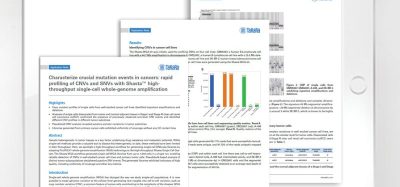Smart robot accelerates cancer treatment research
Posted: 23 September 2015 | Victoria White
The new smart research robot, developed at Uppsala University, accelerates research on cancer treatments by finding optimal treatment combinations…


A new smart research robot accelerates research on cancer treatments by finding optimal treatment combinations.
Today, complex diseases like cancer are medically almost exclusively treated by combining several different drugs. These combinations are typically composed from drugs that show effect on their own, but do not necessarily constitute the best possible combinations. The new robot system finds optimal treatment combinations and was developed by a research group led by Dr Mats Gustafsson, Professor of Medical Bioinformatics at Uppsala University.
“We have built a robot system that plans and conducts experiments with many substances, and draws its own conclusions from the results. The idea is to gradually refine combinations of substances so that they kill cancer cells without harming healthy cells,” said Dr Claes Andersson, a leading scientist on the project.
Instead of just combining a couple of substances at a time, the new lab robot has the ability to handle on the order of a dozen drugs simultaneously. The aim for the future is to be able to handle many more, preferably hundreds.
Next step is to make the robot automated and smarter
“We are now one among the few laboratories in the world with this type of lab robot. However, so far researchers have only used the systems to look for combinations that kill the cancer cells, not taking the side effects into account,” says Mats Gustafsson.
The next step in the development is to make the robot system more automated and smarter. The current version still involves a few manual steps that could be automated. The scientists also want to build more prior knowledge into the guiding algorithm of the robot, for example, prior knowledge about drug targets and disease pathways.
For patients with the same cancer type returning multiple times, sometimes the cancer cells develop resistance against the pharmacotherapy used. The new robot systems may also become important in the efforts to find new drug compounds that make these resistant cells sensitive again.
Related topics
Lab Automation
Related organisations
Cancer Research, Uppsala University







